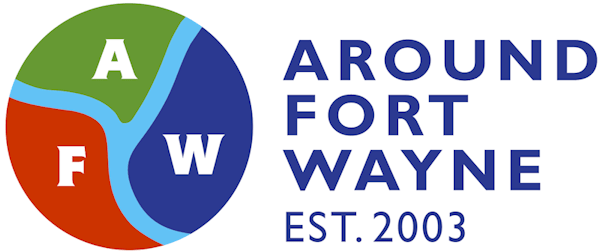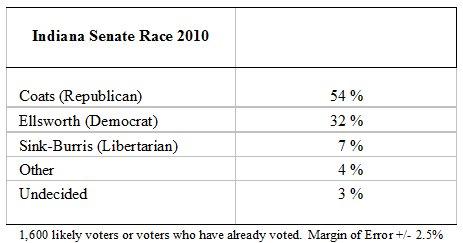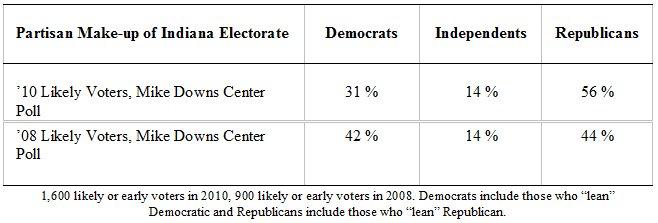![]()
The Mike Downs Center for Indiana Politics has contracted with SurveyUSA to conduct a statewide poll in Indiana.
The press release:
Republican Dan Coats holds a commanding lead over Democrat Brad Ellsworth in the race for Senate in Indiana, and does so in almost every demographic category. Fifty-six percent of men and 51% of women who were called support Coats. Coats’ substantial advantage also crosses all levels of education and all age groups, including a 46% – 33% gap in 18-34 years old. Ellsworth holds a slim lead (40% – 39%) among those who almost never attend church, but lags considerably among those who attend church a few times a year, once or twice a month, almost weekly, and weekly.
Two points stand out particularly as far as political beliefs and past voting behavior. First, comparing our current study to our 2008 presidential general election study, which had the same definition of likely voters and early voters and occurred at the same point in the campaign, it is clear that the two parties differ greatly in how mobilized their supporters are. The percentage of Republicans who are likely to vote or who have already voted in the 2010 Senate election is far greater than the percentage of Republicans who claimed they were likely to vote or who voted early in 2008. Meanwhile, Democrats who were mobilized to put Barack Obama over the top in Indiana in 2008 do not appear as likely to vote this election. This leads to a dramatically different set of likely Hoosier voters in 2010 than in 2008, and one that buoys Coats’ advantage over Ellsworth. In this sense, Indiana follows the historical national norm for presidential party fortunes in midterm elections. This may also provide the single, though improbable, glimmer of hope for the Ellsworth campaign. If Ellsworth could mobilize Democrats in this final week before the election, perhaps this substantial deficit could be trimmed.
The second finding that immediately stands out is that voters who identify themselves as independents, and who do not lean toward one or the other major parties, are not swinging overwhelmingly to Coats relative to Ellsworth. In fact, the Libertarian Rebecca Sink-Burris has nearly half (17%) of the support that Dan Coats (36%) has among Indiana Independents, with Brad Ellsworth (31%) behind Coats. Independents appear frustrated with both major parties, with one in every six Hoosiers supporting the Libertarian candidate. Therefore, Coats’ strong showing among likely and early voters stems primarily from solid Republican support. Despite his large lead, Coats’ standing among Hoosiers is nearly identical to independents’ support of John McCain in 2008. The news is much worse for Ellsworth, who trails Obama’s support among independents by 13 percent.
About the Mike Downs Center for Indiana Politics
The Mike Downs Center for Indiana Politics is a non-partisan organization that helps the people of Indiana understand the role of politics and government in their daily lives. By doing this, The Mike Downs Center hopes to encourage participation in political and public processes the same way its namesake Dr. Michael C. Downs did for more than 34 years. The Mike Downs Center is located on the campus of Indiana University-Purdue University Fort Wayne (IPFW).Statement of Methodology for Statewide Indiana Survey: SurveyUSA interviewed 2,335 registered voters 10/21/10 through 10/25/10, using Registration Based Sample (RBS) from Aristotle in Washington DC. Of the registered voters, 1,600 were determined by SurveyUSA to have already voted, or to be likely to vote in the 11/02/10 midterm election. Where necessary, responses were weighted according to the voter registration database. In theory, with the stated sample size, one can say with 95% certainty that the results would not vary by more than the stated margin of sampling error, in one direction or the other, had the entire universe of respondents been interviewed with complete accuracy. There are other possible sources of error in all surveys that may be more serious than theoretical calculations of sampling error. These include refusals to be interviewed, question wording and question order, weighting by demographic control data and the manner in which respondents are filtered (such as, determining who is a likely voter). It is difficult to quantify the errors that may result from these factors. Fieldwork for this survey was done by SurveyUSA of Clifton, NJ


